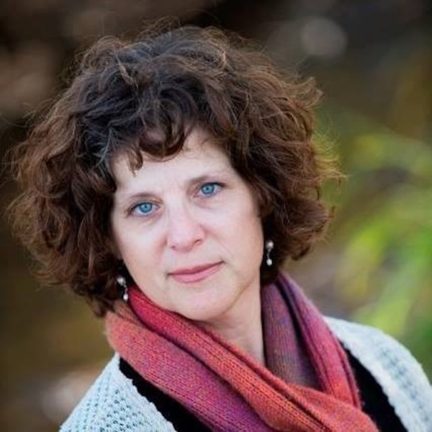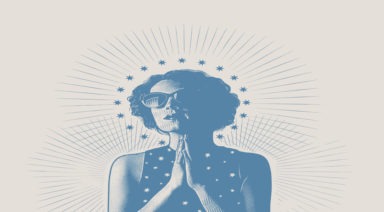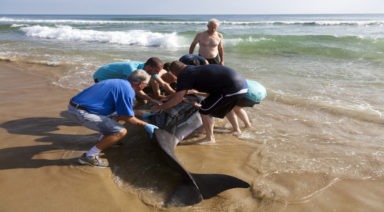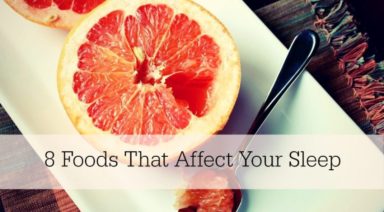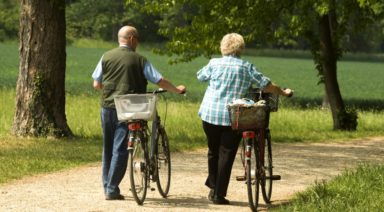Sacred Power: Medical Intuition and Why People Don’t Heal
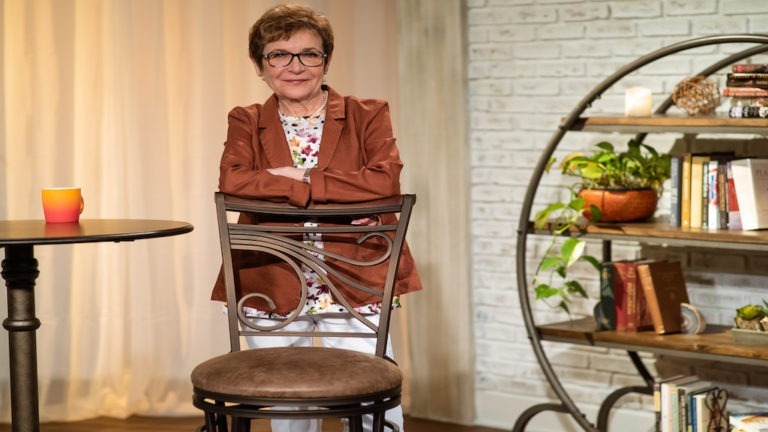
Humans are blessed with an innate potential, or “sacred power,” the highest aspect of our being and living. However, many of us don’t access this power and instead, live below our potential, spiritually, health-wise and in many other ways. The good news is that Caroline Myss, a leading expert in medical intuition, energy medicine, human consciousness, and higher living, in partnership with Gaia, has created an engaging online series entitled “Sacred Power,” designed to inspire, teach, and gently challenge us to live wholly and with the power of our mystical inheritance.
Caroline Myss is recognized for her many accomplishments, including developing the field of Energy Anatomy, as well as her educational institute, CMED (Caroline Myss Education), offering a wide range of online, on-demand, and in-person programs. Caroline is the author of five New York Times bestselling books including Anatomy of the Spirit, The Creation of Health, Why People Don’t Heal and How the Can, Sacred Contracts, Invisible Acts of Power, Entering the Castle, and Defy Gravity. In addition to her books, Caroline is the host of a weekly Hay House radio show and maintains an energetic international workshop and lecture schedule.
The series begins with exploring Medical Intuition, an emerging field of science that develops the critical role that inner, or soul healing, has on one’s well-being. It involves the stories we tell ourselves and others about our individual suffering and how it negatively impacts our health. In Myss’s words, “Your biography becomes your biology” — our body’s emotional field interacts with our cells and tissues; our internal and external experiences, positive and negative can be transformed into a source of power and healing.
According to Myss, every human being is the owner of an intuitive intelligence or sacred power: “99 percent of the time, you are listening to this intuition, responding to it, and never even notice it.“ Myss doesn’t consider medical intuition a gift that is simply dropped into our laps. She believes it is a skill that needs to be developed and fostered so that we are able to notice, pay attention to, and act upon the “energetic signals” that come our way, every day. But what exactly is “medical intuition” and how do we develop it?
Medical Intuition: Our Body’s Energetic Data Bank
Myss herself would be the first to say that she was an unlikely candidate for the medical intuitive field she helped to create. Despite being a co-founder of Stillpoint Publishing, which was dedicated to books on consciousness and personal development, she had little interest in the subject of the books:
“I wasn’t the least bit interested in them. I had no desire to meet any healers myself. I refused to meditate. I developed an absolute aversion to wind chimes, New Age music, and conversations on the benefits of organic gardening. I smoked while drinking coffee by the gallon, still fashioning myself after an image of a hard-boiled newspaper reporter. I was not at all primed for a mystical experience.”
What changed for Myss? She could no longer ignore the deeply profound messages and insights she was receiving about other people’s health. She began exploring her capacity as a medical intuitive and sought out the guidance of C. Norman Shealy, M.D., Ph.D., a Harvard-trained neurosurgeon. In 1996, they opened the Institute for the Science of Medical Intuition, a research establishment dedicated to funding medical intuitive training for medical practitioners.
More than two decades later, thousands of medical intuitive have changed the way we view and receive medical treatment. In addition to this impact, Myss has worked to empower regular people to learn how to access their own medical intuitive skills. In fact, she believes we are living in a highly energetically charged time in which we are capable of intense transformation, a period she refers to an “Energetic Renaissance” in which the choices we make are drawing more power for ourselves and the world. What does this translate into as far as personal empowerment?
Sacred Power and Healing Tools
Myss defines intuition as the “natural ability to not just sense energetic data that fills this dimension of the invisible world, but to interpret it, to understand energetic data.” She teaches that this ability is ever present; however, obstacles to wholeness and health occur when the data is ignored because we are resistant to the messages. If the obstacles are removed, we have access to a mystical ability, an inner voice which Myss defines as our “cosmic guidance system” whose purpose is the overall management of our well being and optimum health. Below are aspects of our mystical ability to note:
- Every person lives in an energy field
- We leak energy, or power, when we are scared, threatened, or stressed
- Energy is never contained; our bodies share stress with our entire being and others
- Our energy field holds “anchors,” energy that targets our cravings, trauma, and wounds and creates psychic weight
Central to the cosmic guidance system and healing tools is the seven chakra system, which Myss divides into two channels: the lower three being our physical world, the one of survival; the upper four, our emotional world with the heart chakra identified as the turning point to the divine energy system. The chakra system contains the sacred energy that is inside all of us, and when we embrace the divine design, we allow those energies to speak through what Myss calls our “bio-spiritual ecology.”
However, despite the availability of this energetic toolkit, Myss recognizes that many people choose to stay in their wounded state, asserting that this state provides a level of social collateral, as well as an accepted form of intimacy. She calls the resistance to healing “woundology” and can be the impediment to transforming one’s personal state of suffering into a font of power.
Our Wounds: Breaking Through the Patterns of Woundology
Myss acknowledges that healing is intimidating, that it can change relationships, and literally shake up one’s world. Moving past our wounds into wholeness is not only an act of bravery but is in direct opposition to our accepted social language in which, as Myss says, “pain has privileges…we expect to be rewarded or compensated for our suffering.” Despite this, Myss asserts that we’re not destined to stay wounded; we’re meant to move past the “consciousness of our wounds.”
When we heal from our wounds, we move into wholeness and our full health and life potential. One of the challenges is that we have close to no positive role models, or iconic whole people to emulate. Another challenge is that wholeness is often viewed as being an unapproachable, solitary state which can make us feel we will not be able to be in a relationship as wholly healed beings.
In the face of the social acceptance of wound intimacy, how do we move past our wounds? Myss counsels that in order to heal our wounds, we must learn the “vocabulary of healing,” moving past words such as “blame” and “deserve” as they represent powerless strategies.
She says that forgiveness is the key to healing and is a “mystical act of the soul.” Our wounds are meant to be healed and while they do happen to all of us, we can choose to view them as critical soul challenges provided to “enhance and build our character” and once healed, we’re able to empower others to do the same.
Myss advises that the next time a friend or loved one begins to speak the language of wounding, instead of adding to that vocabulary of woundology, to make the choice to focus the conversation on a positive and empowering experience. She shares that one of the most difficult choices we can make is the day we stop responding to the power of other’s wounds. Yet, this choice is also liberating and life-affirming.
The path to healing requires courage, but it is one that allows us to live in our sacred power, which is our birthright. Thankfully, that birthright is not a solitary quest; it is a shared birthright and Myss believes that all of us are meant to heal and that in the grand cosmic scheme, “we’re all in this together.”
Caroline Myss is coming to the GaiaSphere event center for an exclusive weekend-long seminar“Revolutionizing Spirituality,” on August 16-18, 2019. The unique event will explore “the next wave of expanded consciousness” and provide an intimate and immersive experience for participants. Learn more about this event here.
How Practicing Gratitude Increases Our Abundance
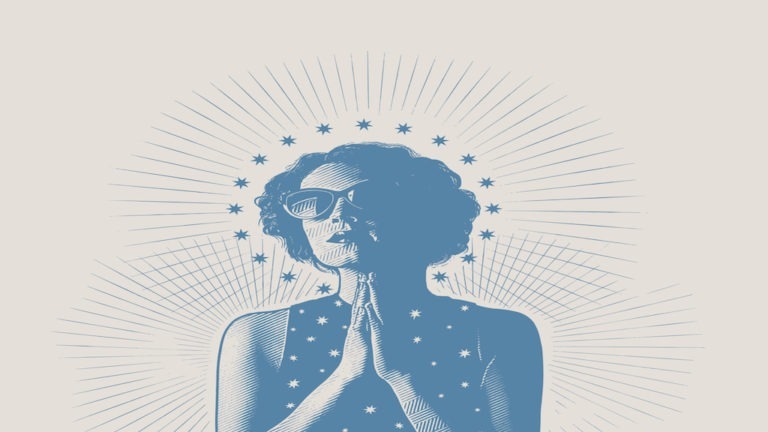
Both gratitude and abundance are states of mind. They are not dependent on the actual outer provisions or circumstances we have at any given moment. It is our belief in abundance or the lack thereof that creates our experience of it. And our ability to be grateful for what is present that brings more goodness to us. The Yoga Sutra that addresses this says:
“Acknowledging abundance (aparigraha) we recognize the blessings in everything and gain insights into the purpose for our worldly existence.”
Sutra 2.39 translation by Nischala Joy Devi, The Secret Power of Yoga
Acknowledging Abundance
The first key word to note from this sutra is “acknowledging.” Abundance exists all around us all the time. The Universe is an ever renewing, incredibly infinite source of potential. Yet we often keep our vision so trained on the tiniest little speck of reality, that we block the flow of this infinite potential into our minds, hearts, and lives. We focus on what we don’t have instead of giving gratitude for all that we do have. And we suffer because of our limiting beliefs and limited perceptions. When we remember that the truest source of all resources is inexhaustible, and we place ourselves into the stream of infinite potential, we open into all the goodness, joy, beauty, love, opportunities, support, guidance, and creativity that life has to offer. Spirit is our constant storehouse of abundance.
Recognize the Blessings in Everything
The other essential teaching in this sutra is to “recognize the blessings in everything.” That means that even when we hurt or struggle, even when we are frustrated or feel tremendous lack, that we see the inherent opportunity to “acknowledge abundance.” We may not love the process of personal growth that comes through suffering, yet we can be grateful for its value in the long run. If we could really accept that every situation, every experience, every encounter holds a blessing for us, what a difference we would feel when faced with challenge. Instead of being afraid or pushing it away, we could embrace it as a gift of abundance from the Universe.
This is a paradigm shift much like the old question, “Is the glass half empty or half full?” By choosing to acknowledge abundance and blessings even when things aren’t exactly as we would like them to be, an amazing thing happens. We open ourselves to the flow of infinite Universal energy. If we hold on or hold back, we impede this flow. ‘Holding’ often comes in the form of believing that we don’t or won’t have “enough.” And this leads to mental restriction, lack of generosity, and availability to life. The energy of abundance requires the ebb and the flow, the receiving and the giving.
Perceiving Our Purpose
The last aspect to consider in this sutra has to do with perceiving our “purpose.” It promises that as we develop an abundance consciousness, we begin to see more clearly the meaning and purpose of our lives. The beautiful thing about abundance is that when we start looking for it, it appears everywhere. Although outwardly we may feel we have little to spare or share, by seeing the ‘glass half full’ we bypass the perceived lack, and find the ways in which we do have abundance. To share the love in our hearts, to offer time for service or a listening ear to someone who needs support gives purpose to anyone’s life. As we magnify the love in our hearts through the glass of abundance, giving freely, we receive even more in return.
So don’t wait for Thanksgiving to express gratitude or to experience abundance. Take some silent moments to open up to and feel the infinite blessings that surround you. Immerse yourself in the flow of Divine abundance now.

